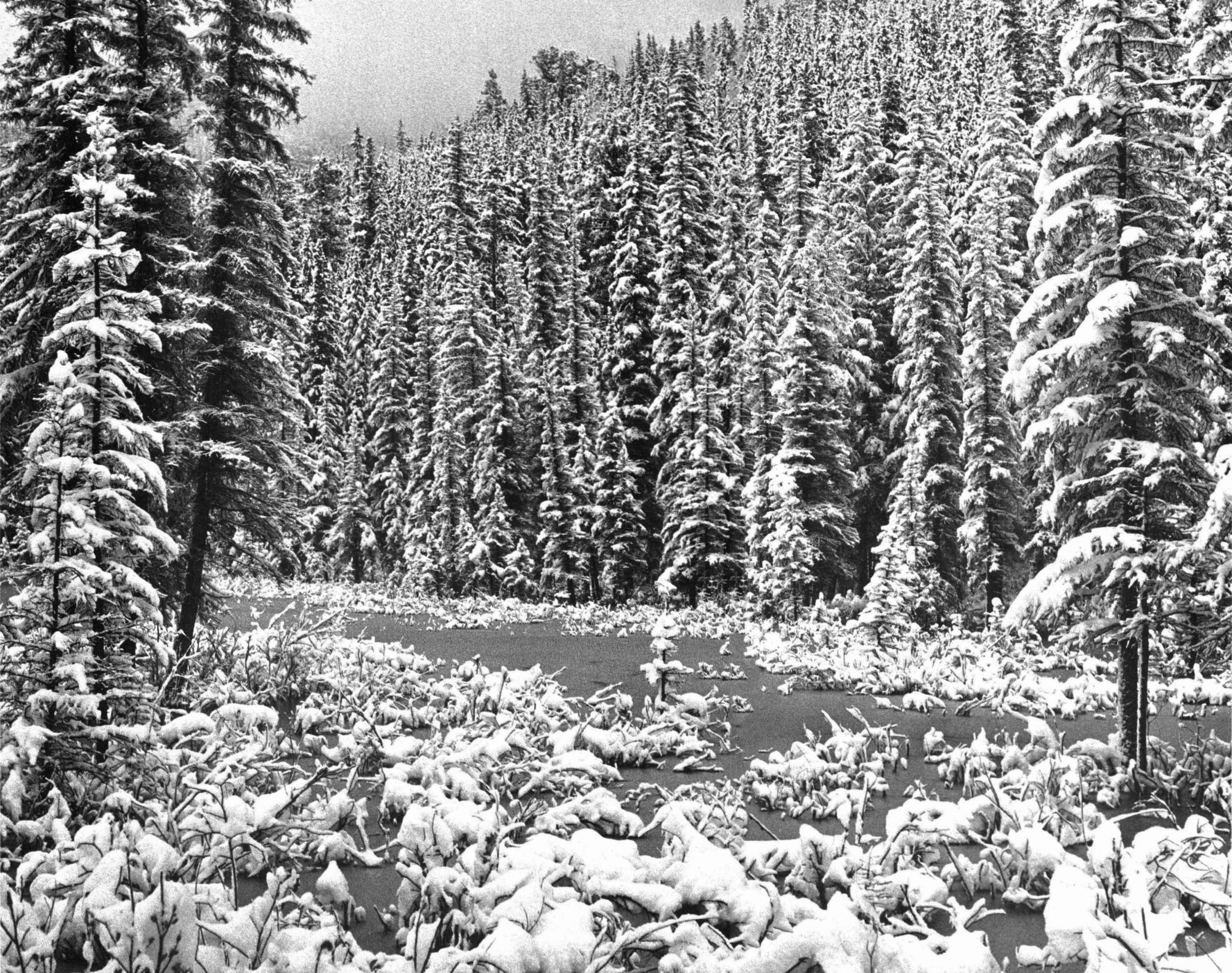
Vision of the forest
For four decades, John Johns has roamed the forests of New Zealand, making pictures that have opened people’s eyes to this country’s woodland heritage. As official photographer for the New Zealand Forest Service, his brief was to promote the principles of sustainable forestry. As a conservationist and artist, he enables us to see something more than logs and board feet. Through his images, we renew our vision of the forest.
A folding brownie camera, resurrected from a musty cupboard in his 400-yearold farm house in Devonshire, started John Johns on a photographic journey that has taken him from the Himalayas to Hanmer, from the giant sequoias of northern California to the beech forests of South Westland. That childhood camera sparked in Johns a love for photography that is as strong today as when he first pressed the shutter.
Johns trained in forestry for four years in England and Wales before emigrating to New Zealand in 1951 and joining the Forest Service. That same year he was appointed official photographer for the Service, a position he held until his retirement in 1984.
From the start, Johns found that forestry and photography fitted naturally and compatibly into his life. “The feeling that forests are places of mystery and wonder was with me during my school years, when I would venture into the dark woods near my home. I’ve never forgotten that sense of mystery, and I try to find it in every forest I visit.” Johns feels the same fascination for the processes of photography—from taking the picture through to printing the image. For him, forest and darkroom are similar environments—both totally absorbing.
“Ansel Adams was like this,” he says. “I would watch him go through the ritual of setting up the eight-by-ten camera. By the time he had the black cloth on and the lens cap off, he had completely tuned himself in to the subject. Not like the fast 35 mm cameras of today, where it’s up and bang!—another masterpiece!”
Johns, a perfectionist by nature, found the discipline of processing and printing suited his temperament. Turned down in his request that his employers provide a darkroom, Johns built his own, closing off the back porch of his Wellington home to create a space no larger than six feet by five. Within this sanctum his vision of the New Zealand forest found expression in the sumptuous details of texture and shadow that he laboured to preserve.
“When the prints start singing to you, you know you’re getting them right,” he says, repeating the advice Ansel Adams gave him. Johns twice attended Adams’ workshops at Yosemite National Park, and came to regard Adams as a mentor and friend.
For Johns, beautiful pictures were never the goal; he wanted to corn‑municate, and his message was conservation. He never saw this to be at odds with his role as a forestry photographer. “My job was to make forestry—long-term, sustainable forestry—digestible to the public. But I started photographing during an era when forestry in New Zealand was still strongly influenced by the ‘cut out and get out’ philosophy of the logging gangs. When I saw the dev‑astation of the West Coast forests it shook me to the core. I couldn’t understand how civilised people could commit such a barbaric crime; how they could destroy such magnificence.”
Johns believes Anglo Saxon attitudes are to blame. “In Europe, they understand long-term forestry. In Germany they manage oak on a 350-year cycle! The English never understood this principle, and look what’s happened to their forest estate. Anglo Saxons have always been poor on management, and big on exploitation.”
A book, Westland’s Wealth, portraying the beauty of unspoiled forest next to the devastation caused by indiscriminate logging practices, was the result of Johns’ experiences on the West Coast. It was the first of several publications Johns produced. Not all were to do with forests. One featured the wild animals of New Zealand; another covered photographic technique. All show Johns’ dedication to technique and to his subject matter.
For the wild animals book, Johns undertook an army camouflage course to teach him stalking techniques, and practised on a herd of Hereford cattle before he felt ready to take on chamois and rusa deer.
A lifetime of contemplating forests has given John Johns a deep affinity for trees. He and his wife Bobbie live on the bushclad slopes of Stokes Valley, near Wellington. Behind their home is a woodlot (left) where seedling redwoods and cedars they planted 40 years ago have become stately giants.
Just up the road, a Buddhist monastery is being built, and johns is the “official” photographer. Somehow, the difference between photographing their shrines of silence and the forests of Aotearoa doesn’t seem very great.
















